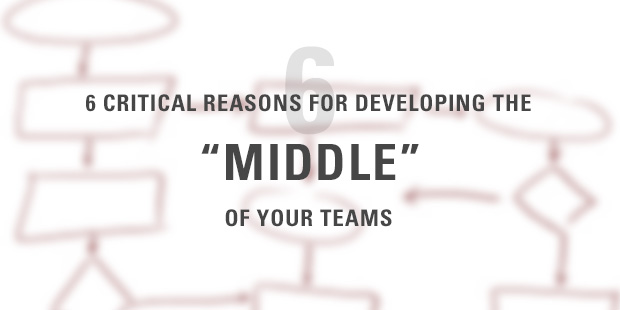
6 Critical Reasons for Developing the “Middle” of Your Teams
Look at leadership development and you see the focus of most conferences and materials is on leaders at the top, or leaders on the front line. This is great – I love to work with senior-level teams and leaders, and have spent decades training volunteer group and team leaders for churches and businesses.
But many groups – especially Non-profits – really need to develop the middle, and the opportunities are endless!
So what about development for the MIDDLE? People have skills and experience beyond entry-level leadership and yet do not desire, are not ready for, or not gifted for – top-level posts. Where are the development strategies for these emerging leaders?
My “Leaders at Every Level” process is designed to develop and support leaders at every level of your church, non-profit or small business.
Here is why it is so important to DEVELOP THE MIDDLE layer of your organization:
1) This is the pool from which you will draw many of your inner circle leaders in the next 4-5 years.
2) An investment here has a huge trickle-down effect, as these leaders become better at passing along the DNA of your organization.
3) You can see whether these leaders can reproduce the investment you have made in them. Can they, and will they, shape the people below them the way you are investing in them?
4) It is a testing ground for greater responsibility. You can takes risks here and let leaders fail without causing too much pain in them or the organization. Yet they have time to learn and recover from failure before advancement to higher levels.
5) Turnover drops dramatically and is directly proportional to the investment you make in people. After a few years people wonder if they are stuck, so they either level off (and just hang on to a job) or move on to better opportunities for growth. If you want turnover, ignore the middle. Here is some great info from The Wharton School that validates this point in business…but I think it is even MORE essential for churches and Non-profits.
6) When top leaders move on or die or retire, there is no “crisis” because you have a built-in succession plan!
So what is your strategy? Share your ideas for development in the middle and I will forward them along. This is a great challenge!
Read more from Bill here.

Tags: Bill Donahue, Healthy Staff, Staff, Staff Development, Staff Transitions











